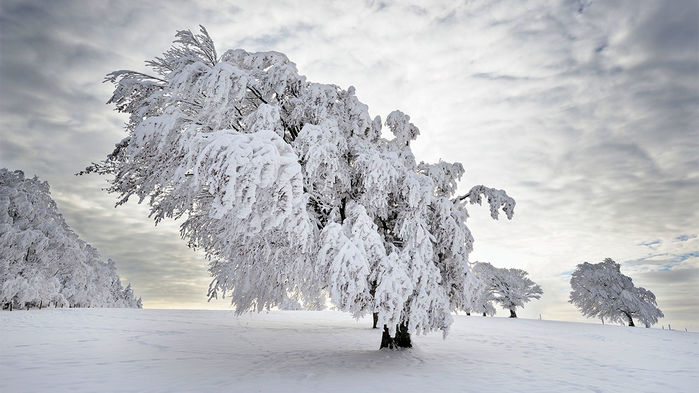Kürzlich in Science publizierte Aufsätze über die Ergebnisse der Waldwachstumsforschung an der TUM

Higher temperatures and more pollution could cause trees to break more easily in storms. IMAGEBROKER/ALAMY STOCK PHOTO
Climate change is making trees bigger, but weaker
By Lakshmi Supriya Aug. 22, 2018 , 11:00 AM
As global temperatures rise, trees around the world are experiencing longer growing seasons, sometimes as much as three extra weeks a year. All that time helps trees grow faster. But a study of the forests of Central Europe suggests the higher temperatures—combined with pollution from auto exhaust and farms—are making wood weaker, resulting in trees that break more easily and lumber that is less durable. Read more:
City trees grow more quickly than their rural cousins. Here’s why
By Lakshmi Supriya<time>Nov. 15, 2017 , 12:50 PM</time>
The countryside may be more idyllic, but trees grow more quickly in the city. That’s the conclusion of a new study, in which researchers analyzed the growth of about 1400 trees in 10 different cities such as Paris; Houston, Texas; Santiago; and Sapporo, Japan. By taking core samples and estimating age and growth using tree rings, they came up with a trend of how trees grew, going back about 150 years. Climate change has generally proved beneficial to trees because warmer temperatures stimulate photosynthesis and extend the growing season, and both rural and urban trees grew faster by up to 17% after 1960. But, urban trees grew even faster, by as much as 25%, compared with trees of the same age outside the cities, the team reports this week in Scientific Reports. This could be because of the urban heat island effect, which causes temperatures in the city to rise as much 10°C compared with those in the surrounding areas. But in subtropical cities—Hanoi; Houston; and Brisbane, Australia—urban trees grew much faster than rural trees before 1960, though the difference in their growth became negligible afterward. This could be because warmer urban temperatures may not be enough to overcome other adverse conditions such as limited water supply and rooting space in cities. If the urban climate today is what rural regions may see tomorrow, this trend does not bode well. There may come a point when the global tree growth rate stagnates and perhaps even declines under warming climates. Read more: